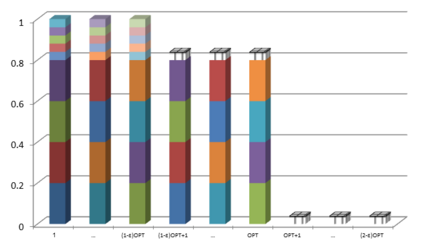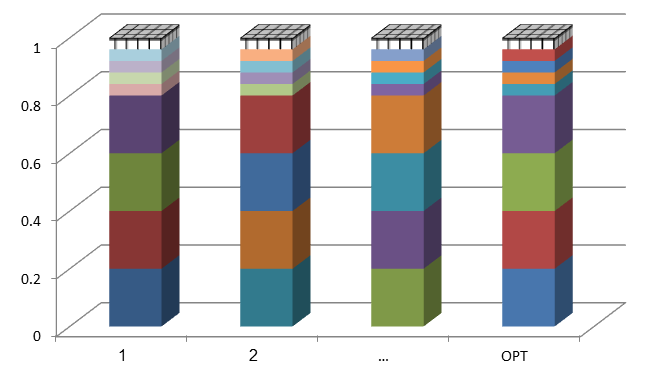We study the following variant of the classic bin packing problem. The input is a set of items $I = \{ 1, \dots , N \}$ with corresponding sizes $s_1,...,s_N \in (0,1]$, partitioned into $n$ groups $G_1,...,G_n$. The goal is to pack the items in a minimum number of unit size bins, such that no two items of the same group are packed in the same bin. This group bin packing (GBP) problem, also known as bin packing with clique-graph conflicts, has natural applications in storing file replicas, security in cloud computing and signal distribution. In this paper, we present an asymptotic polynomial time approximation scheme (APTAS) for group bin packing, thus improving the best known ratio of $2$ [Adany et al., 2016]. In particular, for any instance $I$ and a fixed $\varepsilon \in (0,1)$, our scheme packs the items in at most $(1+\varepsilon)OPT(I)+1$ bins, where $OPT(I)$ is the minimum number of bins required for packing the instance.
翻译:我们研究了经典垃圾包装问题的以下变量。 输入的一组项目是 $I = ⁇ 1,\ dots, N ⁇ $, 相应大小为$_ 1,..., s_N $ $ = 0. 1, 折成 $ G_ n 组, 分割成 $ G_ 1,..., G_ n$ 。 目标是在最小数量单位大小的垃圾箱中包装物品, 使同一组中没有任何两件物品被包装在同一垃圾箱中。 这个组的垃圾包装问题, 也称为 碎纸冲突的垃圾包装, 在存储文件复制件、 云计算和信号分布的安全方面有自然应用。 在本文中, 我们为组的垃圾包装提出了一个简单多时近似计划( APTAS), 从而提高已知的2美元[ Adanny 和 al. 的最大比例。 特别是, $\ varepslon = 0, 1 $, 我们的计划将项目包装在最多$ (1\ varepsilon) 的 bin1, 其中, OP1 + bin1 ($) i) exi) 。






